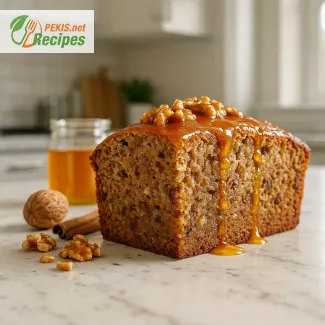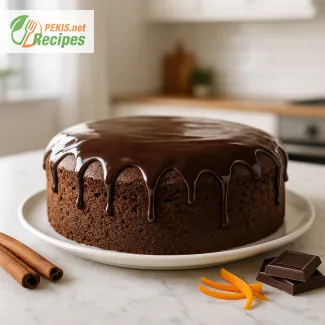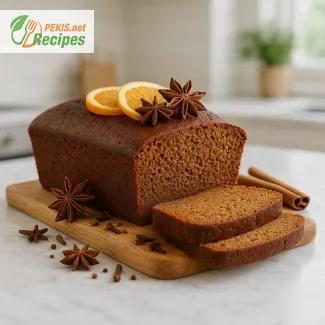
Gluten-Free Chocolate Brownies are a delightful twist on the classic chocolate brownie, specially crafted for those who follow a gluten-free diet or have gluten sensitivities. These brownies are known for their rich chocolate flavor and decadent texture, making them an ideal dessert or snack for anyone who loves chocolate but needs to avoid gluten. The beauty of gluten-free chocolate brownies lies not only in their compatibility with various dietary needs but also in their ability to cater to diverse taste preferences and occasions. Let’s dive deeper into how gluten-free brownies stand out, their best uses, and the different types available on the market.
What Are Gluten-Free Chocolate Brownies?
A gluten-free chocolate brownie is a chocolatey dessert made without the use of gluten-containing ingredients like wheat, barley, or rye. Instead, gluten-free brownies rely on alternative flours such as almond flour, coconut flour, or specialized gluten-free flour blends. These alternative flours provide a similar texture to traditional brownies without causing adverse reactions in individuals with gluten intolerance or celiac disease. The result is a dessert that’s both safe and satisfying, offering all the intense chocolate flavor and moist, fudgy texture that brownies are famous for.
Uses of Gluten-Free Chocolate Brownies
Gluten-free chocolate brownies are extremely versatile and can be enjoyed in various settings and for multiple purposes. Here are some popular uses:
- Celebrations and Parties: Gluten-free brownies are a hit at gatherings, ensuring that guests with dietary restrictions don’t miss out on dessert.
- Everyday Treat: They make an ideal snack to satisfy chocolate cravings without the worry of gluten-related issues.
- Dessert for Special Diets: Since they can be made without dairy or refined sugar, gluten-free brownies can also cater to those on dairy-free or low-sugar diets.
- Gifting: Wrapped in elegant packaging, these brownies make a thoughtful and inclusive gift for friends and family.
- Meal Prep and Lunchbox Addition: Gluten-free brownies can be easily prepped in batches, making them a convenient addition to meal prep plans or packed lunches.
Types of Gluten-Free Chocolate Brownies
With the rise in gluten-free diets, a variety of gluten-free chocolate brownie recipes and products have emerged, each with its unique flavor profile and texture. Here’s an exploration of popular types to help you find the perfect one for your taste:
- Classic Gluten-Free Chocolate Brownies: These are the quintessential fudgy brownies made with gluten-free flour or flour blends. They emphasize the rich flavor of cocoa and often include ingredients like coconut oil or butter to achieve that dense, indulgent texture. Some classic recipes add chocolate chips for an extra layer of chocolate goodness, making each bite exceptionally rich.
- Nut-Based Gluten-Free Brownies: Ideal for those who enjoy a slightly nutty flavor, these brownies replace regular flour with almond flour or cashew flour. The addition of nut flours brings a slightly denser texture and a delicate, nutty aftertaste, complementing the chocolate well. Nut-based brownies are also typically higher in protein and healthy fats, making them a nutritious choice for those seeking a little extra nutritional benefit.
- Vegan Gluten-Free Chocolate Brownies: These brownies cater to both gluten-free and vegan diets, eliminating animal products like eggs and dairy. They often use ingredients like flaxseed meal or chia seeds as egg replacements and may include coconut milk or almond milk for added moisture. Vegan gluten-free brownies maintain their dense texture, thanks to the unique binding properties of seeds, and are a go-to option for those looking for a plant-based dessert.
- Low-Sugar or Sugar-Free Gluten-Free Brownies: For individuals monitoring their sugar intake, low-sugar or sugar-free gluten-free brownies are ideal. They rely on alternative sweeteners like monk fruit extract, stevia, or erythritol to maintain sweetness without adding sugar. These brownies are perfect for diabetics or anyone on a reduced sugar diet and still deliver a satisfying chocolate flavor without the glucose spike.
- Paleo-Friendly Gluten-Free Brownies: These brownies are tailored for the paleo diet and often use natural ingredients like coconut flour or almond butter as the base. Paleo-friendly brownies avoid refined sugars, gluten, and dairy, instead opting for ingredients like maple syrup or honey as sweeteners. They bring a unique flavor and are typically moist, with a slightly denser texture, appealing to those following a natural, unprocessed food lifestyle.
- Avocado-Based Gluten-Free Brownies: A growing trend in gluten-free baking, avocado-based brownies use mashed avocado as a primary ingredient. This type of brownie is rich in healthy fats, bringing a creamy texture and a subtle richness that pairs beautifully with chocolate. Avocado brownies are also nutrient-dense, providing vitamins, minerals, and fiber, making them an ideal choice for those seeking a healthier indulgence.
The Convenience of Quick and Easy Gluten-Free Chocolate Brownies
One of the significant advantages of gluten-free chocolate brownies is their simplicity and speed of preparation. Most gluten-free brownie recipes are designed to be quick and easy, making them accessible even to novice bakers. With minimal ingredients and straightforward steps, these brownies can be prepared, baked, and ready to enjoy in under an hour. Ready-made gluten-free brownie mixes also simplify the process further, requiring only the addition of wet ingredients like eggs or plant-based milk, making them perfect for those pressed for time.
Choosing the Right Ingredients
When making gluten-free chocolate brownies, choosing high-quality ingredients is essential to achieving the best flavor and texture. Here are some tips for selecting the right ingredients:
- Chocolate or Cocoa: Opt for high-quality cocoa powder or dark chocolate to ensure a deep, intense chocolate flavor. Dark chocolate with a higher cocoa content is ideal for a rich, satisfying taste.
- Gluten-Free Flour Blends: These are typically made with a mix of rice flour, potato starch, and tapioca starch, offering a balanced texture that mimics traditional wheat flour.
- Binding Agents: Gluten-free brownies benefit from binding agents like xanthan gum or guar gum to maintain their structure.
- Alternative Sweeteners: For low-sugar varieties, choose natural sweeteners like honey or maple syrup, or go for low-calorie sweeteners that don’t overpower the chocolate taste.
The Perfect Dessert for All Occasions
Gluten-free chocolate brownies are more than just a dessert; they represent inclusivity and versatility. With so many variations, from nut-based to paleo-friendly, these brownies cater to a wide range of dietary needs without compromising flavor or texture. They’re ideal for celebrations, gifting, or simply treating yourself to a quick, chocolatey indulgence that fits within a gluten-free lifestyle.
Gluten-free chocolate brownies prove that dietary restrictions don’t mean sacrificing delicious treats. Whether you prefer a classic brownie or want to try a creative twist like avocado or vegan brownies, these gluten-free delights offer a world of flavor, richness, and versatility. Perfect for any occasion, gluten-free brownies are a crowd-pleaser that everyone, gluten-sensitive or not, can enjoy!
Preparation Steps
- Prepare the Baking Pan and Preheat the Oven:
- Preheat your oven to 175°C (350°F).
- Line a 20 cm x 20 cm (8 x 8-inch) baking pan with parchment paper, leaving a slight overhang on the sides for easy removal after baking.
- Melt the Chocolate and Butter:
- In a heatproof bowl, combine the dark chocolate and butter.
- Melt over a pot of simmering water (double boiler method) or in the microwave in 20-second intervals, stirring each time, until smooth. Allow the melted mixture to cool slightly.
- Mix the Sugar, Eggs, and Vanilla:
- In a large mixing bowl, whisk together the sugar and eggs until the mixture is pale and thickened (about 1-2 minutes).
- Stir in the vanilla extract.
- Combine the Chocolate Mixture:
- Gradually add the melted chocolate and butter mixture to the sugar and eggs, folding gently with a spatula until well combined.
- Add Dry Ingredients:
- Sift the gluten-free flour, cocoa powder, and salt into the bowl with the chocolate mixture.
- Fold the dry ingredients gently into the wet ingredients until no streaks remain, being careful not to over-mix.
- Pour into Pan and Bake:
- Pour the batter into the prepared baking pan, spreading it evenly.
- Bake for 25-30 minutes or until a toothpick inserted into the center comes out with a few moist crumbs (do not overbake, as the brownies will continue to set after removing them from the oven).
- Cool and Slice:
- Allow the brownies to cool completely in the pan on a wire rack.
- Once cooled, lift the brownies out using the parchment overhang, slice into 12 pieces, and serve.
Nutritional Impact of Gluten-Free Chocolate Brownies
These gluten-free chocolate brownies contain a combination of ingredients that provide energy, essential fats, proteins, carbohydrates, and a few vitamins and minerals, making them a satisfying yet indulgent dessert. While this treat isn’t intended as a significant source of daily nutrients, it does offer components that impact health in both beneficial and cautionary ways.
Key Ingredients and Their Effects on the Body
1. Dark Chocolate
- Nutritional Benefits: Dark chocolate (especially with 70% cocoa or higher) is rich in antioxidants such as flavonoids, which have been linked to improved cardiovascular health by reducing inflammation and improving blood flow.
- Minerals: Dark chocolate also contains iron, magnesium, and zinc, all of which play crucial roles in blood oxygenation, muscle and nerve function, and immune support.
- Heart Health: The cocoa content in dark chocolate can help lower blood pressure and increase HDL (good cholesterol) levels, thereby supporting cardiovascular health when consumed in moderation.
2. Butter
- Healthy Fats: Butter provides a source of saturated fats that, in moderation, can be beneficial for the body by helping to absorb fat-soluble vitamins like vitamin A, which is essential for vision, immune function, and skin health.
- Energy and Metabolism: Butter is calorie-dense, providing a quick source of energy. While high in calories, the presence of butyrate (a type of fatty acid found in butter) has been shown to support gut health and reduce inflammation.
3. Eggs
- High-Quality Protein: Eggs in these brownies contribute complete proteins, essential for muscle maintenance, enzyme production, and overall cellular function.
- Vitamin B12 and Riboflavin: Eggs are a valuable source of vitamin B12, which aids in red blood cell formation and nerve function, and riboflavin (vitamin B2), essential for energy production and metabolic processes.
- Choline: Eggs are rich in choline, which supports brain health and cognitive function.
4. Gluten-Free Flour Blend
- Digestive Benefits: Gluten-free flours, such as rice or potato flour, are easier on the digestive system for individuals with gluten sensitivities or celiac disease, helping avoid inflammation or adverse reactions often associated with gluten.
- Energy from Carbohydrates: These flours provide the carbohydrates needed for quick energy, though they are lower in fiber than whole wheat flour. To add fiber, incorporating almond or coconut flour would be beneficial in gluten-free recipes.
5. Cocoa Powder
- Antioxidant Power: Cocoa is loaded with polyphenols, natural compounds that act as antioxidants, helping reduce oxidative stress in the body and supporting heart health.
- Mood-Enhancer: Cocoa powder contains small amounts of theobromine and phenylethylamine, compounds linked to improved mood and cognitive function. Cocoa also stimulates the release of endorphins and serotonin, which can positively affect mood.
6. Sugar
- Quick Energy: The granulated sugar in these brownies provides immediate energy, beneficial for short-term physical or mental exertion. However, due to its high glycemic index, sugar spikes blood glucose, which, in excess, can lead to insulin resistance over time.
- Moderation for Health: While sugar is fine in small amounts, regularly consuming high amounts of sugar can increase the risk of weight gain, type 2 diabetes, and other metabolic conditions. Reducing sugar content or opting for alternatives like stevia or monk fruit can make the recipe friendlier for blood sugar levels.
Vitamins and Their Health Effects
Although these brownies are not a primary vitamin source, they still contain essential vitamins that contribute to various bodily functions:
- Vitamin A: Present in butter, vitamin A supports vision health, skin repair, and immune defense, particularly useful for individuals with reduced intake of animal-based foods.
- B Vitamins (B12, B2): Eggs provide vitamin B12 and riboflavin (B2), crucial for energy metabolism, red blood cell production, and nerve function. These vitamins are especially beneficial for those following diets low in meat or animal products.
- Iron: Found in dark chocolate, iron is necessary for oxygen transport in the blood and supports overall cellular health. This mineral is particularly valuable for individuals prone to anemia or low iron levels.
- Magnesium: Dark chocolate contains magnesium, essential for muscle relaxation, nerve function, and bone health, while also playing a role in over 300 biochemical reactions in the body.
Fats and Health Impact
These brownies contain a balance of saturated and unsaturated fats. Here’s how they impact health:
- Saturated Fats: Butter contributes saturated fats, which, while often limited in heart-healthy diets, can help absorb certain vitamins and may offer energy for those with higher metabolic demands.
- Unsaturated Fats: If using dark chocolate with a good cocoa content, unsaturated fats are present, supporting heart health, lowering LDL cholesterol, and providing fatty acids that are generally healthier for long-term cardiovascular support.
Potential Health Concerns and Suggested Modifications
- Sugar Content: Excessive sugar can lead to spikes in blood glucose. Reducing sugar or substituting it with low-glycemic alternatives (like monk fruit or erythritol) can help make the recipe more suitable for diabetic or weight-conscious individuals.
- Saturated Fat: The recipe contains butter, which has saturated fat. For those looking to lower saturated fat intake, replacing butter with coconut oil or a plant-based margarine can provide a similar texture without the animal-based saturated fats.
- Eggs: People with egg allergies can replace eggs with flaxseed or chia egg substitutes (1 tbsp ground flaxseed or chia + 3 tbsp water per egg). This also adds fiber and omega-3s, further enhancing the brownies' nutritional profile.
While gluten-free chocolate brownies are primarily an indulgent dessert, their ingredients, like dark chocolate, eggs, and butter, contribute small amounts of beneficial vitamins, minerals, and antioxidants. With careful ingredient selection or modifications, such as reducing sugar and choosing higher-quality dark chocolate, these brownies can be slightly enhanced for better nutritional value without compromising their decadent flavor.
Gluten-free chocolate brownies, while delicious and satisfying, should ideally be enjoyed as an occasional treat rather than a daily indulgence. Due to their high sugar and fat content, regular consumption could contribute to weight gain, increased blood sugar levels, and potential nutrient imbalances. Consuming these brownies once or twice a week, especially as part of a balanced diet that emphasizes fruits, vegetables, whole grains, and lean proteins, allows you to enjoy their flavor without compromising your overall health.
General Advice
- Portion Control: Cutting smaller portions can make each serving more manageable in terms of calories and sugar, allowing you to enjoy the treat without overindulging. Consider pairing a smaller brownie piece with a source of fiber, like fresh fruit, to create a more balanced snack.
- Opt for High-Quality Ingredients: When possible, use high-quality dark chocolate with a cocoa content of 70% or higher for a richer flavor and more antioxidants. Quality ingredients enhance taste and offer slight health benefits, such as better heart support from dark chocolate.
- Add Nutritional Boosters: Incorporating nuts, seeds, or a few tablespoons of ground flaxseed into the recipe adds fiber, healthy fats, and protein, which can help stabilize blood sugar after consuming the brownies.
- Experiment with Sugar Alternatives: If you’re concerned about sugar intake, try natural sweeteners or sugar alternatives, like stevia or monk fruit, which can reduce the glycemic impact without sacrificing sweetness.
In summary, gluten-free chocolate brownies are best enjoyed in moderation. By prioritizing portion control and experimenting with nutrient-boosting ingredients, you can make this dessert a more mindful choice within a balanced, healthy diet.
This recipe contains eggs and dairy (butter), common allergens. The chocolate may also contain traces of nuts or milk, depending on the brand. Check labels for allergens if you have specific sensitivities.
Substitution Tips to Address Allergens
- Egg Replacement: Substitute each egg with 1 tbsp (15 ml) ground flaxseed mixed with 3 tbsp (45 ml) water; let sit for 5 minutes to thicken.
- Dairy-Free Option: Replace the butter with an equal amount of coconut oil or dairy-free margarine for a dairy-free version.
- Nut-Free Option: While this recipe doesn’t use nuts, ensure the chocolate is certified nut-free if required.





